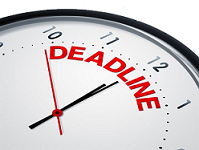Topic: Business plan editing
Order Description
Competitor Analysis
As stated beforehand, iPARK is an application on mobile phones – an automated system for parking cars, allowing drivers to exit the car and command it to go and find a parking area. This will also include many of the so-called ‘emergent’ communication technologies such as WLAN, BLUETOOTH, LASER, and WI-FI.
Competition is expected to be heavy as carmakers and search engines companies have already developed applications enabling cars to autonomously navigate congested highways, search for alternative routes, handle intersections, search for parking spaces, and pick-up people in transit. Carmakers such as Nissan, Toyota, and even GM have already introduced automated-driving features that include automated software for parking cars (Ohnsman and Trudell.2014). Search engine firms like Yahoo! and Google have likewise done the same. With so many players and rivals in the market, competition is thus expected to be heavy.
(This part needs improvement. Your product offers an application for driverless parking and also unlimited parking in selected car parks. You need to analyze completion in both business lines. You can also use Porter’s Five forces framework to analyse competition. )
Business Start-Up Cost
Start-up costs include rent and facility, utilities, software research and development, equipment and maintenance, supplies and equipment, legal compliance (for the legal department), and marketing and promotion. Software research and development will represent at least 40% of the company’s start-up cost. Total start-up cost is estimated to be around £300,000. For this purpose, the company needs at least £350,000 in seed funding to fund its first year of operations. About £140,000 will be allocated for software research and development, £30,000 for legal compliance, £50,000 for supplies and equipment, £70,000 for marketing and promotion, and the rest for rent and facility, utilities, and equipment and maintenance. The company has to raise at least £1.25 million in additional funding for miscellaneous purposes.
(Why Prices are quoted in GBP? You will operate in Germany so the cost should be in Euro rather than any other currency (Dollar etc) this has to be consistent throughout the business plan. )
(You wrote that “About £140,000 will be allocated for software research and development” This doesn’t sound very realistic. What does it include? Have you done any research on this?)
(Have you included salaries? In team management you mentioned that you will hire)
(•Chief Executive Officer: The person needs to have experience for new-venture. He also must have innovative ideas in planning the activities of business. How much is the average salary? This has to be researched and included)
(•Mobile Application developer: is that an engineer? He needs to have plenty of experience in developing IT and mobiles based applications. Again, how many developer you need and how much you will pay?)
(•Legal office: He needs to have a law degree and plenty of experience. Same question as above)
(•Sales person: How many sales representative you will need, what are the salaries (and bonuses if it applies). )
(•Marketing team: Same questions above)
(Also I keep coming across to copyrights. Have you researched the cost? Why not it is not added here. )
(You wrote “Total start-up cost is estimated to be around £300,000” Breakdown of cost is not clear. £140,000 for R&D, £30,000 for legal compliance, £50,000 for supplies and equipment, £70,000 for marketing and promotion. This leaves £10000 for the rent and facility, utilities, and equipment and maintenance. )
(Than you wrote “The company has to raise at least £1.25 million in additional funding for miscellaneous purposes” £1.25 million is quite an amount for miscellaneous. What includes in miscellaneous purposes?)
(Do you have a budget for contingencies?)
Five-Year Cash Flow Analysis
Refer to the table below for analysis. Note that during the first three (3) years, the company will be incurrent a negative yearly net cash flow.
(If company will have negative cash flow how will it find funds to pay its suppliers?)
Cumulative net cash flow for the fourth year is equal to £90,000. This will continue to increase as revenues from the sale of software product increases on a yearly basis. This analysis is contingent upon the assumption that all other costs are fixed (Hofstrand 23).
Cash Inflow
Year 1
Year 2
Year 3
Year 4
Year 5
Beginning Cash Balance
£350,000
Sale of Software Product
£50,000
£200,000
£350,000
£450,000
£600,000
Additional Inflow Payments
Total Inflow
£400,000
£200,000
£350,000
£450,000
£600,000
Cash Expenditures
Rent and Facility
£10,000
£10,000
£10,000
£10,000
£10,000
Utilities
£5,000
£5,000
£5,000
£5,000
£5,000
Software R & D
£140,000
£100,000
£130,000
£150,000
£200,000
Equipment & Maintenance
£15,000
£15,000
£15,000
£15,000
£15,000
Supplies & Equipment
£50,000
£50,000
£50,000
£50,000
£50,000
Legal Compliance
£30,000
£30,000
£30,000
£30,000
£30,000
Marketing & Promotion
£70,000
£70,000
£70,000
£70,000
£70,000
Total Expenditures
£320,000
£280,000
£310,000
£330,000
£380,000
Yearly Net Cash Flow
£30,000
-£80,000
£40,000
£120,000
£220,000
Cumulative Net Cash Flow
£30,000
-£70,000
-£30,000
£90,000
£310,000
(Cost quoted in GBP, this doesn’t make sense you will operate in Germany. Are you going to pay rent, salaries in GBP? Then in this case exchange rate fluctuations will affect your cost.)
(Rent: £10000 this seems to be very low. What does it include? Where is the office? How much are yearly rents? Did you do any research?)
(R&D cost: again, doesn’t seem to be realistic. Please do a research. )
(You need to include salaries too.)
9Supply and Equipment: What is included in supply? is this cost constant over five years?)
(Is £350000 savings from founder or the business or bank loan? How much is the loan? What is the interest rate and how much will be paid back? This has to be included in cash flow.)
(Why cumulative cash flow would be £30000? How did you calculate this? Is this your closing balance? If so numbers doesn’t add up. Please double check.)
Break-Even Analysis
Break even is the point where the total of fixed and variable costs of operating a business is equal to total revenue. It is at this point, the business is incurring neither a profit nor a loss. From the table above, it is very difficult to pinpoint the break-even point of the company. But one thing is clear: after the third year, the company will start to make a profit. This analysis however does not include interest payments to outstanding loans and other miscellaneous. Nonetheless, the company will make positive profits after its third year of operations.
(Writing “From the table above, it is very difficult to pinpoint the break-even point of the company” is not enough. )
(You need to split cost as fixed cost and variable cost. Calculate your average variable cost and total fixed cost and apply the formula. )
(This part is not about return of investment.)
(You need to calculate how many units you need to sell in order to breakeven (just to cover cost of production) )
NOTE THIS WAS WROTE AT FIRST BY WRITER (43178)

 Our orders are delivered strictly on time without delay
Our orders are delivered strictly on time without delay  Our orders are delivered strictly on time without delay
Our orders are delivered strictly on time without delay 


